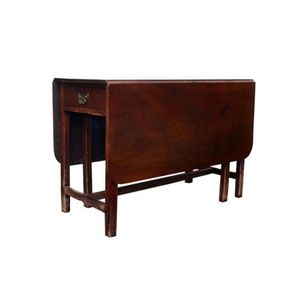18th Century Spanish Walnut Vargueno with Metal Mounts
You must be a subscriber, and be logged in to view price and dealer details.
Subscribe Now to view actual auction price for this item
When you subscribe, you have the option of setting the currency in which to display prices to $Au, $US, $NZ or Stg.
- Cornice - The upper section of a high piece of furniture such as a bookcase, wardrobe or cabinet that sits immediately on the main structure. The cornice is usually decorated with a variety of architectural mouldings, worked either with a moulding plane or, from the later 19th century, by machine. The front and side of the cornice are mitred together, strengthened by glue blocks, and the back is generally a simple dovetailed rail to hold the structure together. Cornices are generally, though not always, fitted separately to the piece and are held in place either by screws sunk into the top board or by wooden corner blocks. A pediment may sit above the cornice, but sometimes the terms cornice and pediment are used interchangeably.
- Mounts - Mounts are used to describe bronze, brass and ormolu adornments on furniture especially quality furniture in the rococo and classical revival style, and are also the cabinet makers' name for the metal fittings on furniture, such as hinges, locks and handles, and metal edges and guards which protect furniture from damage.
- Fluting - A form of decoration found on many pieces of furniture, as well as ceramics, silver and clocks, in which round-bottomed grooves, of varying width and depth, are let into columns, pilasters, legs. As a general rule, flutes are cut in the vertical, though they may follow a turned leg in a spiral pattern. In cross-section, they may be described as a series of 'U' shapes, rising and narrowing at each end of the groove. Fluting is the opposite of reeding, with which fluting is often associated.
This item has been included into following indexes:
Visually similar items

A hall table with inlaid tumbling box top and one drawer, blackwood, huon pine and cedar, Tasmanian origin, late 19th century, 70 cm high, 77 cm wide, 47 cm deep

A George III brass mounted mahogany hexagonal cellarette, English circa 1760, on stand, 75 cm high, 50 cm wide

English oak gate leg table, 19th century, with side drawer and brass hardware. Height 72 cm. Width 139 cm. Depth 106

A Sheraton Revival centre table. Octagonal form with satinwood banding, the frieze boxwood stringing on shaped legs with under shelf. 75 cm high, 88 cm wide.
